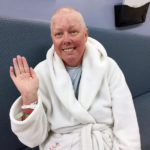By Dr. Tim Millea
“I have good news and bad news.” Perhaps the most familiar use of this phrase is in health care with the physician’s review of examinations and tests with the patient. This well-known adage also applies to a more general assessment of our medical system today. In 21st century medicine, there is indeed “good news and bad news.” Although today’s conventional wisdom can be negative about health care today, bright spots are emerging, including here in our area.

What is the good news? The scientific triad of computer science, molecular biology and immediate communication tools has produced exponential leaps in diagnosis and treatment. One hundred years ago, the average life expectancy in America was 61 years. With the blessings of modern medicine, that has increased to 79 years. We understand more than ever that we can treat better than ever, and we live longer than ever. How can there be any bad news?
One of the troubling issues regarding our current health care system relates to a basic tenet: The patient-physician relationship. The patient trusts the physician to place the patient’s welfare above the physician’s self-interest, while the physician trusts that the patient will share in the care and stewardship of his health. Unfortunately, the benefits of scientific advances can be accompanied by negative or even detrimental effects. All too often, medical care has become depersonalized and bureaucratic, with a resulting erosion of the all-important trust. The New England Journal of Medicine documented this reality in 2014. In 1966, 73% of Americans reported “great confidence” in the medical profession. By 2012, that number dropped to 34%. Why? An examination of declining confidence requires attention to both the patient and the physician.
Multiple studies have evaluated the factors that lead to patients’ trust in their physician. The two most frequently cited are time and communication, factors important in any relationship, whether it be marriage, parenting or friendship. Adequate time and communication increase the likelihood of a “patient-centered” experience, in contrast to a “clinician-centered” experience. If the patient is seen as a person with unique concerns addressed by an unhurried physician who communicates in an open and honest fashion, the mutual satisfaction for both is enhanced.
It is clear, however, that most physicians today must also combat obstacles to building strong relationships with their patients. Since many physicians practice in large groups or are hospital-employed, their responsibilities extend beyond patient care. They are expected to see patients in an “efficient” manner that will maximize productivity and revenue. The advent of electronic medical records (EMR) has not delivered on the promise of less time for record keeping with patient visits. A 2018 study of family medicine physicians in Texas revealed that more than half of the time related to a patient visit was spent on EMR. Many physicians, and likely most, want to spend more time with their patients.
Fortunately, hope exists for restoration of the optimal patient-physician relationship. Recently, more than 100 physicians in Charlotte, North Carolina, ended their employment with a large health system to form their own independent group. As one of their leaders stated, they wanted to “improve the quality of our own lives and the care of our patients.” Physicians know what is missing in their preferred relationship with their patients, and are taking action to improve the satisfaction for both parties.
One of the fastest-growing physician practice models now is direct primary care (DPC). This establishes a close and cooperative relationship between the primary care physician and the patient, without the intrusion of frustrating insurance forms and time-consuming EMR. The patient pays a monthly membership fee, which allows immediate access to their primary care physician, and the cost for their major medical insurance coverage is decreased. This simple and transparent approach to personalized health care lowers costs dramatically, and simultaneously elevates the confidence and satisfaction for both the patient and the physician.
From a Christian perspective, the combination of DPC and a faith-centered approach to care provides the most comprehensive experience in health care today. Physical and emotional wellness are addressed and the spiritual wellness of the patient is recognized. The Catholic principles for the dignity, value and protection of life at all stages provide reassurance to the patient of his or her value as a child of God, made in his image. The Quad-Cities area is now blessed with its first clinic of this type. Life and Family Medical opened in Bettendorf in late 2020, with a commitment to ethical and moral medical care for individuals and families. Clinic appointments focus on quality of care, not quickness of care. The patient and physician maintain a relationship and function as a team, working together to optimize health in a truly holistic manner.
Patients and physicians share the same goals. Both want to achieve a mutual and trusting cooperation that optimizes the care provided. Patients want to be confident that their physician knows them well. Physicians want their patients to know they are committed to caring for them, body, mind and soul. With the advent of clinics such as Life and Family Medical, these goals can be achieved, and enthusiasm for truly effective patient-physician relationships will grow rapidly.
(Dr. Tim Millea is president of the St. Thomas Aquinas Medical Guild and a member of St. Paul the Apostle Parish in Davenport.)











